Join More Than 50,000+ Subscribers and get latest camera news and rumors
NEW CAMERA VIDEOS ON YOUTUBE
|
By admin, on May 26th, 2025
Nikon Z5 II is an entry-level camera, and Sony A7 IV is a semi-professional full-frame camera. The Sony A7 IV camera was announced on October 21, 2021. And if you compare with the Nikon Z5 II, it has been almost 3.5 years of gap between the two cameras, so despite of being an entry-level camera, the Nikon Z5 II has arrived with really advanced core specifications and it looks very competitive.
Price Difference Between the Sony A7 IV and the Nikon Z5 II
The other good thing that we generally see at first is the price difference, even before the specification, current status of both the cameras by applying all the possible discounts:
Sony A7 IV Price – $2498
Nikon Z5 II Price – $1696
So, we do have a good price difference between the two cameras.
And the amount of money we are saving in the Nikon Z5 II body, we can get lenses like Nikkor 50 mm 1.8, Nikkor 28 mm f/2.8 or Viltrox 85mm f/1.8 Z.
Now let’s talk about the design difference, the difference we have in the photographic features of both cameras and finally the video core specs difference.
Best camera design-wise:
Nikon has been creating their DSLR for decades, and their mirrorless Z5 II is very easy to hold. At the very same time, we now have a 3000-nits brightness-based electronic viewfinder which helps us to shoot even in harsh light conditions.
Sony is in its 4th generation of A7 series camera, and overall design of the camera is really very good, and the good thing is that the old menu system of the Sony has been upgraded in the A7 IV so now you don’t have to fight with the old menus in the Sony camera. So overall, the A7 IV camera design is also very appealing and usable, although about EVF screen brightness information remains uncertain. Sony hasn’t disclosed how many nits of brightness does the A7 IV EVF has.
Why do We Need a CF Express card SLot in the Sony A7 IV?
For storage purposes, the Sony A7 IV camera also features an additional CFexpress card slot inside it, but we don’t know the exact requirement of the CF card type A existence inside the Sony body since the continuous shooting speed of the A7 IV camera is limited to 10 frames per second. Even in that, the specific scenario doesn’t require that CFexpress card. And when we talk about 4K 30 APS-C crop 60fps recording, in both of these scenarios the recording resolution and bitrates match with the Nikon Z5 II, which does the everything same or even better by recording complete N-RAW video internally and providing continuous shooting speed in high resolution up to 30 frames per second in the SD card slot.
Yes, we do have a slight resolution difference between the 24 MP and 33 MP sensor, and we are going to compare both sensors here in this article and let’s find out the best sensor for you. Image credit to all tests goes to dpreview.com
Which Camera Captures the Best Images?
Yes, we do have a slight resolution difference between the 24 MP and 33 MP sensor, and we are going to compare both sensors here in this article and let’s find out the best sensor for you.
Now we have picked up the Nikon Zf camera since the Nikon Z5 Mark II uses the same sensor as the Nikon Zf, so we are comparing the Nikon sensor against the Sony A7 IV in this comparison.
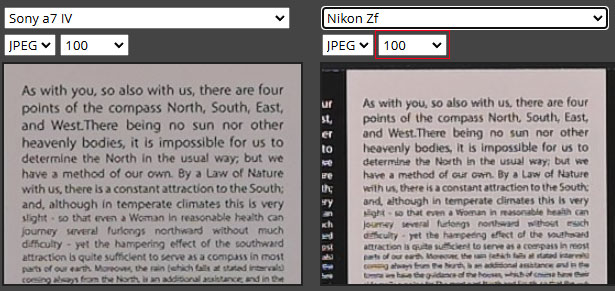
A comparison is very clear the Sony A7 IV camera is able to pick a bit more detail due to a slightly higher-resolution sensor, so if you are into commercial photography or need large prints,
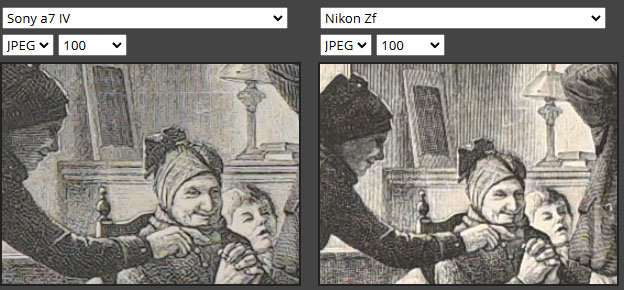
But this is not always the case. In some of the specific spots of the image, we have witnessed that the Nikon Zf / Z5 Mark II camera sensor is able to grab a bit more detail. As you can see, the pencil shading and the fine lines are more clearly visible in the samples below.
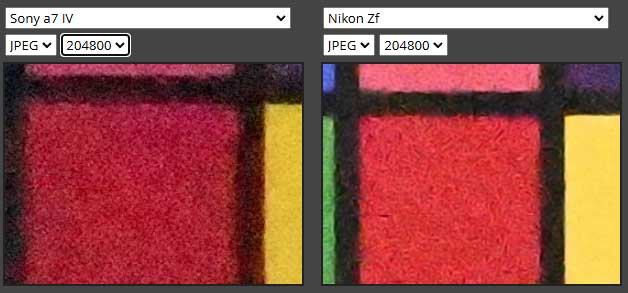
Best Camera for LOW LIGHT Photography?
The Nikon Z5 II is more suitable for low-light photography. We have to consider several factors before we judge the best camera for low-light photography. As in the comparison table, you can see that the Nikon Z5 Mark II autofocus sensitivity can go down up to -10EV, which is exceptional in this price range. At the very same time, the Nikon Z5 Mark II camera features 7.5 stops of sensor image stabilisation system, and that can be linked to the autofocus point of the camera, resulting in a highly stabilised video or still output. And at the very end, we have a 24MP BSI sensor that helps us reach the maximum potential of the camera. Combining all three factors makes the Nikon Z5 ideal in terms of low-light photography.
Best camera for wildlife photographers and sports shooters?
Nikon Z5 II is the best camera, again, and it depends on several factors. Starting from the continuous shooting speed, the Nikon Z5 Mark II camera excels. It has a maximum continuous shooting speed of up to 30 frames per second. The Sony A7 IV camera remains limited to 10fps. But that’s not the only limitation — we have again the autofocus sensitivity of the Sony A7 IV is limited, and the sensor image stabilisation of the Nikon Z5 II has become increasingly advanced. You can link the entire IBIS unit with your moving autofocus points. And at the end, if you are worried about the autofocus performance, then the Z5 II, paired up with the Expeed 7 image processor, features 9 different types of subject detection algorithms inside it. And even if you love to capture birds, the camera can do bird-eye autofocus with the latest updates.
Best camera for video?
Both of the cameras record 10-bit footage, RRS video, and 4K 60FPS video with a 1.5X crop. At the very same time, both of them can record Full HD videos at 120 frames per second. The big difference can be seen when the new Nikon Z5 Mark II camera can deliver complete RAW footage of 12-bit in your internal SD card, and the cherry-on-top thing is when you are shooting in N-Log, then you have a different set of RED LUTs available to you, which will make your entire footage more and more professional. And apart from all these, we also have vectorscope, waveforms, and timecode functionality. The Nikon Z5 Mark II camera is recommended for professional use. If you are a professional wedding cinematographer or someone who loves to capture short stories in a professional way, then the Nikon Z5 Mark II is best for you.
Sony A7 IV doesn’t support complete RAW video recording. At the very same time, the picture profiles are limited. But it does support high-quality 4K recording and S-Log, HLG support. At the very same time, the gyro-based image stabilization system helps to stabilize the footage to the maximum extent. So if you’re shooting handheld, like creating your own personal vlog, then instead of having the Nikon Z5 Mark II camera, the A7 IV will be a bit more suitable.
Best camera for longer recording
If you have to shoot podcasts, then the initial specification says the Sony A7 IV can record unlimited videos, whereas the Nikon Z5 Mark II has a 2-hour 5-minute limit, and after that, you have to start it again. Now, the concern with the Sony A7 Mark IV camera is that you have to use it in controlled weather environments and with fast V90 or CFexpress cards if you wish to record 10-bit videos for more than 1+ hour. But that’s not the case with the Nikon Z5 Mark II camera — the body is heat-resistant and supports uninterrupted recording for long periods. So you have to decide whether you want an overheating-free camera (but again, you have to restart at the 2 hour 5 minute mark), or you can deal with the Sony A7 IV if you are sitting in a controlled weather environment with air conditioners.
Specification Comparison Table Nikon Z5 II vs Sony A7 IV
| Feature |
Nikon Z5 II |
Sony A7 IV |
Design
|
| Lens Mount |
Nikon Z |
Sony E |
| Dimensions (W x H x D) |
5.3 x 4 x 2.8″ / 134 x 100.5 x 72 mm |
5.2 x 3.8 x 3.1″ / 131.3 x 96.4 x 79.8 mm |
| Weight (With Battery, Media) |
1.5 lb / 700 g |
1.4 lb / 658 g |
| Material of Construction |
Magnesium alloy/polycarbonate |
Magnesium Alloy |
| Operating Conditions |
32 to 104°F / 0 to 40°C, up to 85% humidity |
32 to 104°F / 0 to 40°C |
| Display Size |
3.2″ |
3.0″ |
| Display Resolution |
2,100,000 Dot |
1,036,800 Dot |
| Display Type |
3-Way Tilting Touchscreen LCD |
Free-Angle Tilting Touchscreen LCD |
| Viewfinder Type |
Electronic (OLED) |
Electronic (OLED) |
| Viewfinder Size |
0.5″ |
0.5″ |
| Viewfinder Resolution |
3,690,000 Dot |
3,680,000 Dot |
| Viewfinder Magnification |
Approx. 0.8x |
Approx. 0.78x |
| Viewfinder Eye Point |
21 mm |
23 mm |
| Viewfinder Diopter Adjustment |
-4 to +2 |
-4 to +3 |
| Media/Memory Card Slot |
Dual Slot: SD/SDHC/SDXC (UHS-II) |
Slot 1: CFexpress Type A / SD (UHS-II), Slot 2: SD/SDHC/SDXC (UHS-II) |
| Video I/O |
1x Micro-HDMI Output |
1x HDMI Output |
| Audio I/O |
1x 3.5 mm TRS Stereo Headphone Output, 1x 3.5 mm TRS Stereo Microphone Input |
1x 3.5 mm TRS Stereo Headphone Output, 1x 3.5 mm TRS Stereo Microphone Input |
| Other I/O |
1x 3.5 mm Remote Input, 1x USB-C (USB 3.2 / 3.1 Gen 1) Data Input/Output |
1x Sony Multi/Micro-USB Remote Input, 1x USB-C (USB 3.2 / 3.1 Gen 1) Data Input/Output |
| Wireless |
Bluetooth 5.0, 2.4 / 5 GHz Wi-Fi 5 (802.11ac) |
Wi-Fi 4 (802.11n), Bluetooth 4.1 |
| Mobile App Compatibility |
Yes: SnapBridge (Android & iOS) for file access, firmware updates, and remote control |
Yes: Creators’ App (Android & iOS) for file access, settings, remote control, and setup |
| GPS |
Via a connected smartphone |
Via a connected smartphone |
| Battery |
1x EN-EL15c Rechargeable Lithium-Ion (Approx. 380 shots) |
1x NP-FZ100 Rechargeable Lithium-Ion, 7.2 VDC, 2280 mAh (Approx. 520 shots) |
| Shoe Mount |
1x Hot Shoe |
1x Intelligent Hot Shoe |
| Tripod Mounting Thread |
1x 1/4″-20 Female (Bottom) |
1x 1/4″-20 Female (Bottom) |
| Package Weight |
2.555 lb |
2.48 lb |
| Box Dimensions (LxWxH) |
7.9 x 7.8 x 5.1″ |
10.2 x 7.2 x 6.4″ |
Photography Features Comparison
|
| Sensor Resolution |
Actual: 25.28 Megapixel, Effective: 24.5 Megapixel (6048 x 4032) |
Actual: 34.1 Megapixel, Effective: 33 Megapixel (7008 x 4672) |
| Image Sensor |
35.9 x 23.9 mm (Full-Frame) CMOS |
35.9 x 23.9 mm (Full-Frame) CMOS |
| Sensor Crop (35mm Equivalent) |
Crop Factor: 1x |
Crop Factor: 1x, Additional Modes: 1.5x (Select video modes) |
| Image Stabilization |
Sensor-Shift, 5-Axis, 7.5 Stops, you can link with AF points |
Sensor-Shift, 5-Axis, Traditional |
| Built-In ND Filter |
No |
No |
| Capture Type |
Stills & Video |
Stills & Video |
| Shutter Type |
Mechanical Focal Plane Shutter and Electronic Rolling Shutter |
Mechanical Focal Plane Shutter and Electronic Rolling Shutter |
| Shutter Speed |
1/8000 to 30 seconds, Bulb & Time Mode |
1/8000 to 30 Seconds, Bulb Mode (1/8000 to 1/4 Second in Movie Mode) |
| ISO Sensitivity (Photo) |
Native in Auto Mode: 100 to 64,000 (50 to 204,800 Extended) |
Native in Manual Mode: 100 to 51,200 (50 to 204,800 Extended), Native in Auto Mode: 100 to 12,800 |
| Metering Method |
Center-Weighted Average, Highlight Weighted, Matrix, Spot |
Center-Weighted Average, Highlight Weighted, Multi-Zone, Spot |
| Exposure Modes |
Aperture Priority, Auto, Manual, Program, Shutter Priority |
Aperture Priority, Auto, Manual, Program, Shutter Priority |
| Exposure Compensation |
-5 to +5 EV (1/3, 1/2 EV Steps) |
-5 to +5 EV (1/3, 1/2 EV Steps) |
| Metering Range |
-4 to 17 EV |
-3 to 20 EV |
| White Balance |
Presets: Auto, Cloudy, Color Temperature, Direct Sunlight, Flash, Fluorescent, Incandescent, Preset Manual, Shade
Portrait Persona: Custom Skin WB Tone Selector (Video still both) |
2500 to 9900K, Presets: ATW, AWB, Auto, Cloudy, Color Temperature, Color Temperature Filter, Custom, Daylight, Flash, Fluorescent (Cool White, Day White, Daylight, Warm White), Incandescent, Shade, Underwater |
| Continuous Shooting |
Up to 30 fps at Maximum Resolution |
Up to 10 fps at Maximum Resolution for up to 1000 Frames (Raw, JPEG) |
| Interval Recording |
Yes |
Yes |
| Self-Timer |
2/5/10/20-Second Delay |
2/5/10-Second Delay |
| Aspect Ratio |
1:1, 3:2, 16:9 |
1:1, 3:2, 4:3, 16:9 |
| Image File Format |
HEIF, JPEG, Raw |
HEIF, JPEG, Raw |
| Bit Depth |
14-Bit |
14-Bit |
| Focus Type |
Auto and Manual Focus |
Auto and Manual Focus |
| Focus Mode |
Continuous-Servo AF, Full-Time Servo, Manual Focus, Single-Servo AF |
Continuous-Servo AF, Direct Manual Focus, Manual Focus, Single-Servo AF |
| Autofocus Points |
Phase Detection: 273 |
Phase Detection: 759, Contrast Detection: 425 |
| Autofocus Sensitivity |
-10 to +19 EV |
-4 to +20 EV |
| Built-In Flash/Light |
No |
No |
| Flash Modes |
First-Curtain Sync, Off, Rear Curtain Sync/Red-Eye Reduction, Rear Sync, Red-Eye Reduction, Slow Sync, Slow Sync/Red-Eye Reduction |
Auto, Fill Flash, Hi-Speed Sync, Off, Rear Sync, Red-Eye Reduction, Slow Sync |
| Maximum Sync Speed |
1/200 Second |
1/250 Second |
| Flash Compensation |
-3 to +1 EV (1/3, 1/2 EV Steps) |
-3 to +3 EV (1/3, 1/2 EV Steps) |
| Dedicated Flash System |
iTTL |
TTL |
| External Flash Connection |
Shoe Mount |
Shoe Mount |
Video
|
Raw Video Recording
|
Yes, NRAW |
NA |
| Internal Recording Modes |
H.264/MOV/MP4:
UHD 4K (3840 x 2160) at 23.98/25/29.97/50/59.94 fps
1920 x 1080p at 23.98/25/29.97/50/59.94/100/120 fps |
H.264/XAVC S-I 4:2:2 10-Bit:
UHD 4K (3840 x 2160) at 23.98/25/29.97/50/59.94 fps [240 to 600 Mb/s]
1920 x 1080p at 23.98/25/29.97/50/59.94 fps [89 to 222 Mb/s]
H.265/XAVC HS 4:2:2 10-Bit: |
| Video IS |
IBIS + EVR |
Yes, Gyro |
| External Recording Modes |
8-Bit via HDMI:
UHD 4K (3840 x 2160) up to 29.97 fps |
4:2:0 8-Bit via HDMI:
UHD 4K (3840 x 2160) at 23.98/25/29.97/50/59.94 fps |
| Fast-/Slow-Motion Support |
No |
Yes |
| Overheating issues, if any |
No |
Requires V60 above the card, Fixed with the recent firmware updates |
| Log and Gamma Curve |
Not specified |
HDR-HLG, Sony S-Log 2, Sony S-Log 3 |
| Recording Limit |
2-Hour 5-Minute Maximum |
No |
| IP Streaming |
No |
No |
| Built-In Microphone |
Stereo |
Stereo |
| Audio Recording |
MOV, Raw: 24-Bit 48 kHz AAC Audio
MP4: 16-Bit 48 kHz LPCM Audio |
XAVC S: 2-Channel 16-Bit 48 kHz LPCM Audio
MPEG4: 2-Channel AAC LC Audio |
Follow us on our social pages FACEBOOK | TWITTER | INSTAGRAM to get live Camera News + Nikon Rumors 24X7
By admin, on April 19th, 2025
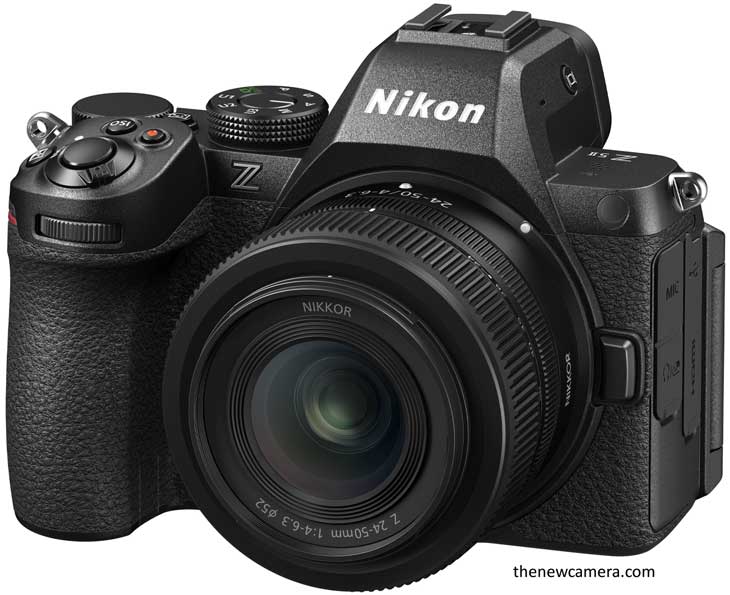
The Nikon Z5 II camera was announced in April 2025. It features the same sensor as the Nikon Zf and Z6 II cameras, paired with Nikon’s fastest speed 7 image processor. The AI autofocusing of the Nikon Z5 II camera is much improved over its predecessor. Now, it features 9 different types of subject detection algorithms, including bird’s-eye autofocus.
We have carefully selected the best available lenses for the Nikon Z5 Mark II camera. These lenses will help you in various photography genres, including wedding, sports, wildlife, portrait, and landscape photography. You can use any of the lenses recommended below in the article.
Nikon Z mount lenses
Let’s first understand the Z mount lenses. The new Nikon Z mount has a shorter flange distance compared to the DSLR F mount, so the lenses that you are using in the mirrorless camera feature superior optical performance, and the shorter flange distance allows them to have a compact design and better light transmission, resulting in sharper images.
You can also use the Nikon FTZ or the FTZ Mark II adapter to use Nikon DSLR lenses, which are compatible with the adapter.
Nikon Z5 II also features a sensor-shift image stabilisation system up to 7.5 stops that also helps you to enhance image sharpness by allowing you to use slow shutter speeds in an uncontrolled light environment.
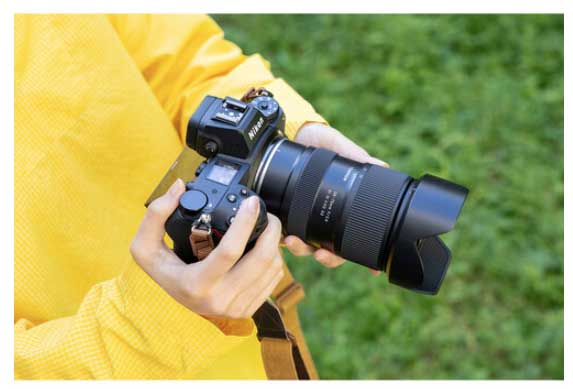 Nikon Z6 Best Lenses for Nikon Z5 II: Top Picks for Every Photographer in 2025 1. Best Lenses for Wedding Photography | Best Standard kit Zoom Lens
Tamron 28-75mm f/2.8
The Tamron 28-75mm f/2.8 lens is a versatile zoom lens, a perfect lens for wedding photography, travel, landscape or street photography. It’s a perfect lens for everyday use if you want to have a standard kit zoom lens with constant f/2.8 aperture. The biggest advantage of having an f/2.8 lens over f/4 is the cinematic depth of field. If you don’t need it, if you want everything in focus, of course you can raise your aperture to f/4, f/5.6 or f/8. But with an f/4 lens, you can never set your aperture to f/2.8. That’s the facility we get from the Tamron f/2.8 lens.
-
Key Features: 72mm filter thread, 500g weight, 0.3m minimum focus distance, weather-sealed.
-
Pros: Super-sharp images, lightweight, retractable design.
-
Cons: f/4 aperture less ideal for low light compared to f/2.8 lenses.
-
Latest Deals & Price: B&H Store | amazon.com
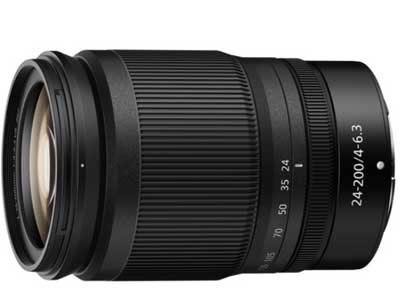
Alternative: Nikon Z 24-200mm f/4-6.3 VR – Photographers who love to have more reach, approximately 8x optical zoom range to cover from wide angle to telephoto range, then this lens is highly suitable for them. Yes, you will miss the cinematic depth but you will have more zoom range in your hand. The lens also features Vibration Reduction, which is an important feature for a longer focal length lens.
-
Key Features: 77mm filter thread, 570g weight, 4.5-stop VR.
-
Pros: Extensive zoom range, compact for a superzoom.
-
Cons: Variable aperture, less sharp at longer focal lengths.
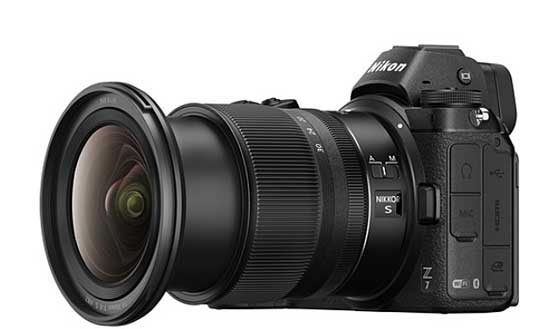
2. Best Lens for Landscape Photography
Nikon Z 14-30mm f/4 S
The Nikon 14-30mm lens is a top choice among landscape photographers, and its usage is not only limited to them — even architecture photographers, interior designers prefer this lens a lot. It covers a very wide range due to its ultra-wide focal range and a very compact design. The lens exhibits very minimal distortion and excellent sharpness throughout the range.
-
Key Features: 82mm filter thread, 485g weight, 0.28m minimum focus distance.
-
Pros: Ultra-wide angle, high image quality, filter compatibility.
-
Cons: Pricey, no focus distance scale.
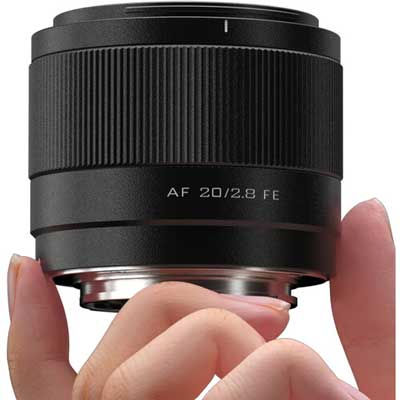
Alternative Third-Party Wide-Angle Lens
Viltrox 20mm f/2.8 lens is one of the best budget ultra-wide-angle full-frame lenses available for Nikon Z mount from a third-party lens maker, although it may not deliver the optical precision that Nikon S-line lenses deliver to you. Get it from B&H Store
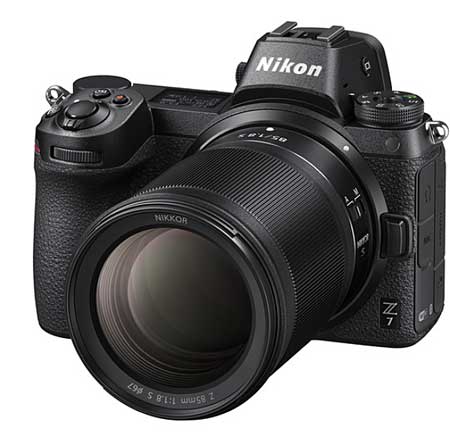
3. Best Lenses for Portrait Photography
Nikon Z 85mm f/1.8 S
The Nikon 85mm f/1.8 S is the sharpest portrait lens available for the Nikon Z mount. It delivers superb images with excellent background blur — or you can say very creamy bokeh — ideal for headshots and full-body portraits. Reviews also report its excellent out-of-focus capability and reliability.
-
Key Features: 67mm filter thread, 470g weight, 0.8m minimum focus distance.
-
Pros: Outstanding sharpness, beautiful bokeh, weather-sealed.
-
Cons: Depth of field not as tight as f/1.4 lenses.
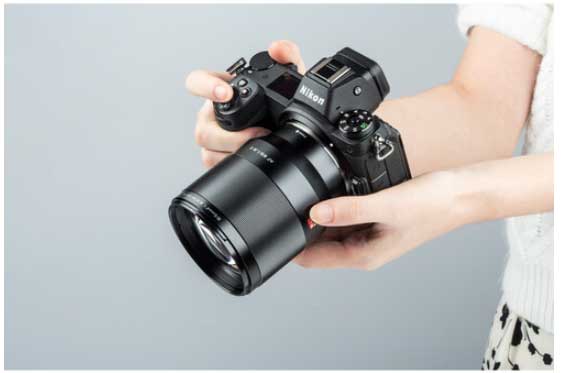
Alternative: Viltrox 85mm f/1.8 lens
For budget-conscious photographers, the Viltrox 85mm f/1.8 is the best third-party option. As per the reports we have, it does deliver decent sharpness and background blur at just half the price of the Nikon 85mm f/1.8 lens. Although the autofocus consistency as well as the solid build quality may not resemble with the Nikon 85mm f/1.8 lens, but rest assured you will not be disappointed with its performance.
-
Key Features: 72mm filter thread, 484g weight.
-
Pros: Affordable, good optical performance.
-
Cons: Less reliable autofocus, limited weather sealing.
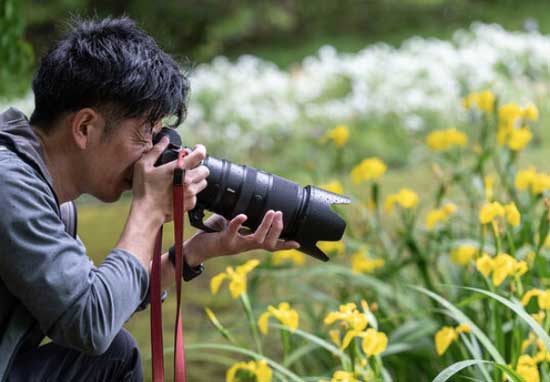
4. Best Lenses for Wildlife and Sports Photography
Nikon Z 100-400mm f/4.5-5.6 VR S
The Nikon Z 100-400mm f/4.5-5.6 VR S is an excellent, versatile, and SUPER FAST telephoto zoom lens that is a perfect option for the Nikon Z5 II camera. The lens is fast and perfect for Sports photographers for track + continuous capture. The VR system of the lens is also very effective, and you can do handheld shooting with this lens. Finally, this lens is also compatible with the teleconverters, and you can use it if you need more zoom or reach.
-
Key Features: 77mm filter thread, 1355g weight, 0.75m minimum focus distance.
-
Pros: Fast AF, Excellent sharpness, versatile range, VR stabilization.
-
Cons: Heavy, expensive.
- Latest Deals & Price: B&H Store | amazon.com | Adorama
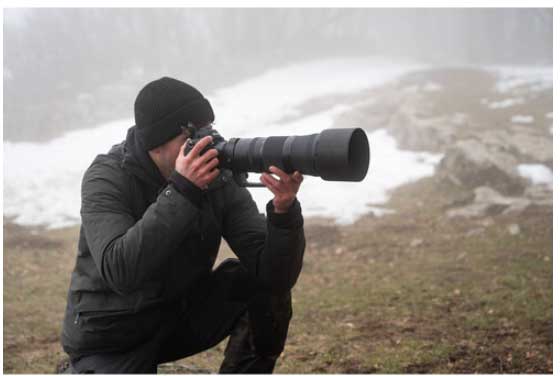
Another option for Wildlife Photographers: Nikon 180-600mm lens – The Nikon Z 180-600mm f5.6-6.3 VR lens’s sharpness is phenomenal and delivers tack-sharp images across the full frame at all focal lengths. As I have said if budget allows this is the best lens you can buy for your Nikon Z5 II camera. The lens pairs beautifully with the Z TC-1.4x without any issues and boasts a speedy and dependable autofocus. The Lens handles color aberrations, coma, focus-breathing, and distortions with aplomb. Plus, it’s got effective optical image stabilization and produces a creamy bokeh. Weighing in at a relatively high 2kg and packed with features, this lens offers great value for its price. If you’re looking for a lens that delivers on performance, the Nikon Z 180-600mm f5.6-6.3 VR lens comes highly recommended! Get a Nikon 180-600mm Lens from Amazon.com | B&H Store
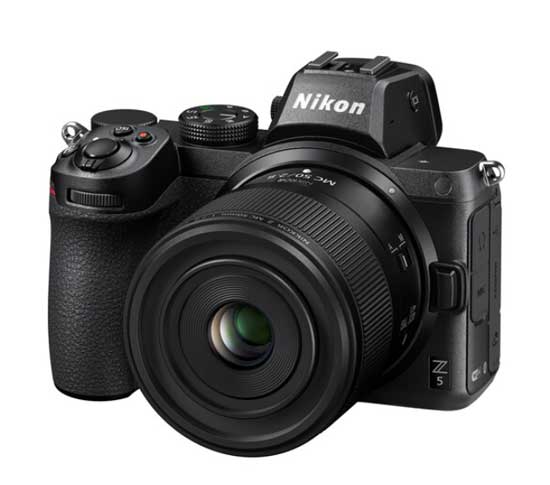
5. Best Lenses for Macro Photography
Nikon Z MC 50mm f/2.8
The Nikon Z MC 50mm f/2.8 is a compact macro lens that delivers true 1:1 magnification, or you can say real-life-size images. The lens is a budget lens and delivers the maximum sharpness possible. Although the only drawback is that you don’t have a large working distance, meaning you have to be a bit close to the subject.
-
Key Features: 46mm filter thread, 260g weight, 0.16m minimum focus distance.
-
Pros: Sharp images, 1:1 magnification, affordable.
-
Cons: Short working distance, no VR.
Alternative: Nikon Z MC 105mm f/2.8 VR S lens
If looking for a longer working distance and budget is not an issue to you, then the best lens for macro photography is the Z MC 105mm f/2.8 VR S. Due to its very effective VR as well as Nikon Z5 II’s 7.5 stops of sensor IBIS, you can do handheld macro photography shots, although it’s always recommended to do macro photography with a tripod if possible.
-
Key Features: 62mm filter thread, 630g weight, VR stabilization.
-
Pros: Longer reach, stabilized optics, excellent sharpness.
-
Cons: Expensive, heavier.
- Latest Deals & Price: B&H Store | amazon.com | Adorama
Third-Party Lens Options
Many third-party lens makers like Viltrox, Sigma, and Tamron are making autofocus lenses for the Z mount. We have selected some of the best and our favorites, and these are below:
-
Viltrox AF 85mm f/1.8: Affordable portrait lens with good sharpness but less consistent autofocus.
-
Tamron 35-150mm f/2.8-4: Versatile zoom for events and travel, offering a unique focal range.
-
Sigma 24mm f/1.4 Art: Wide-angle prime with excellent image quality, though less common in Z-mount.
FAQ: Nikon Z5 II Lens Questions
What are the best lenses for the Nikon Z5 II in 2025?
The best lenses for the Nikon Z5 II include the ultra-popular and most used Tamron 28-75mm f/2.8 G2 lens. This particular lens is one of the most favorite lenses for wedding and event photographers. This one is the best alternative to the standard kit lens you generally get with your camera. Guaranteed! The next best lens is the Nikon Z 14-30mm f/4 S for landscape photography and ultra-wide coverage. And finally, for portraits, as we have mentioned in our article also the Nikon Z 85mm f/1.8 S. For wildlife, the Z 100-400mm f/4.5-5.6 VR S is recommended, but the best again is the Nikon 180-600mm for bird photography lovers. And before we complete this answer, the Nikon MC 50mm f/2.8 Micro is the best suitable lens to start macro photography.
Can I use F-mount lenses on the Nikon Z5 II?
Yes, you can use your F-mount lenses with the new Nikon Z5 II camera while using the FTZ or the FTZ II adapter. The autofocus and auto exposure will work perfectly with the Nikon AF-S and Nikon AF-I lenses. But the older manual focus lenses or those lenses that are based on screw-drive motor tech will not work with the Z5 II.
What is the difference between the Z mount and F mount lenses?
Z mount lenses are designed for the mirrorless camera, having a shorter flange distance, resulting in better light preservation resulting in higher resolving capability. At the very same time, the optics have also been improved in the new Z mount lenses. F-mount lenses were typically made for DSLRs having a broader flange distance, and if you want to use those lenses on your mirrorless camera, you have to use an FTZ or FTZ II adapter.
Are there budget-friendly lenses for the Nikon Z5 II?
We have many budget lenses that start from Tamron 28-75mm f/2.8, which comes at a very reasonable price range and features f/2.8 constant aperture. We have lenses like 20mm f/1.8 — a full-frame lens for Nikon. We have lenses like the 85mm f/1.8. Several third-party lenses are cost-effective and made for Z mount.
What is the best lens for landscape photography with the Nikon Z5 II?
The Nikon Z 14-30mm f/4 S is the best and the ideal lens for landscape photography. It provides an ultra-wide zoom range and captures very crisp and sharp images with minimal distortion.
What is the best standard kit zoom lens for the Nikon Z5 II camera?
The best standard kit zoom lens for the Nikon Z5 II camera is the Tamron 28-75mm f/2.8 G2 lens. The lens offers a very compact design and features constant f/2.8 aperture so it’s an excellent low-light performer and works very well with the Nikon Z5 II’s 7.5 stops of IBIS to deliver crisp and clear images with excellent cinematic depth.
Best portrait photography lens for the Nikon Z5 II camera?
The Nikon 85mm f/1.8 S lens is the best and it delivers exceptionally sharp images with very smooth creamy background blur and very reliable and fast autofocusing mechanism. This lens is a perfect choice for professional portrait photography with the Nikon Z5 II camera, and if you are on a budget, then of course Viltrox 85mm f/1.8 lens is the budget alternative to it.
Do the Sigma, Tamron, or Viltrox third-party lenses work with the Nikon Z5 II camera?
Yes, the third-party lenses from Viltrox, Sigma, and Tamron are fully compatible with the Nikon Z series camera and offer fast autofocus and exceptional image quality. Since Nikon has shared their autofocus algorithm with these third-party lens makers, rest assured, even in the near future, you won’t have any AF issues related to third-party lenses.
Lets us know if you have any questions
Support us – Use or affiliate link Amazon.com | B&H Store for the next purchase u make – it helps us 🙂
Update Log: This Guide was created on 19 April 2025 by thenewcamera.com team of editors. Follow us on our social pages FACEBOOK | TWITTER | INSTAGRAM to get live Camera News +
By admin, on April 15th, 2025

Nikon Z5 II vs Sony A7 III – Let’s compare the two and find out the best, we have selected all the major difference between the two camera, starting from the desing part, and the the Major differences in the photography part of both camera,s and finally, the best camera for video.
In the Latest Nikon Z5 II, we have a deep rear hand grip and an enhanced display as well as an electronic viewfinder. The rear display screen in the Nikon Z5 II is a vari-angle display screen with higher resolution, so you can also create content/vlog with the camera, and photographers will have a bit more compositional freedom. The electronic viewfinder is of higher resolution and rated up to 3000 nits of brightness, helping to shoot perfectly in daylight conditions. The Nikon Z5 II design is slightly more professional and looks very similar to the Nikon professional Z6 III model. The battery life of the Nikon Z5 II is slightly limited so you have to carry an extra battery pack or a power bank with you.
| Aspect |
Nikon Z5 II |
Sony A7 III |
| Body Dimensions |
134 x 100.5 x 72 mm (Large handgrip) |
127 x 96 x 74 mm (Slightly small) |
| Weight |
700g (with battery, media) |
650g (with battery) |
| Grip & Ergonomics |
Larger, deeper grip with still/video switch, tactile dials |
Smaller grip, more custom buttons, compact layout |
| Build & Weather Sealing |
Magnesium alloy, weather-sealed (32 to 104°F, 85% humidity) |
Magnesium alloy, dust/moisture resistant (tropicalization) |
| Card Slots |
Dual UHS-II SD/SDHC/SDXC slots |
One UHS-II + one UHS-I SD slot |
| Display Size |
3.2-inch touchscreen |
3.0-inch touchscreen |
| Display Resolution |
2,100,000 dots |
921,600 dots |
| Display Type |
3-way tilting (up/down/side) vari-angle |
2-way tilting (up/down) |
| Touchscreen Functionality |
Full control (menus, focus, zoom) |
Limited (focus point, double-tap zoom) |
| Viewfinder Type |
Electronic OLED |
Electronic OLED |
| Viewfinder Resolution |
3,690,000 dots |
2,359,296 dots |
| Viewfinder Magnification |
0.8x |
0.78x |
| Viewfinder Eye Point |
21 mm |
23 mm |
| Battery |
1x EN-EL15c Lithium-Ion (~380 shots CIPA) |
1x NP-FZ100 Lithium-Ion (~610 shots CIPA) |
| Power Delivery |
USB-C input/output (live power during shooting) |
USB 3.1 (charging only) |
| Video I/O |
Micro-HDMI output |
Mini-HDMI output |
| Audio I/O |
3.5mm headphone, 3.5mm microphone |
3.5mm headphone, 3.5mm microphone |
| Other I/O |
3.5mm remote, USB-C 3.2/3.1 Gen 1 (data/power) and Multi-interface shoe |
Multi-interface shoe (remote/audio), USB 3.1 (data) |
| Wireless Connectivity |
2.4/5 GHz Wi-Fi 5 (802.11ac), Bluetooth 5.0 |
2.4 GHz Wi-Fi (802.11b/g/n), Bluetooth 4.1 |
| NFC |
None |
Included |
| Mobile App |
SnapBridge (Android/iOS, files/firmware/remote) |
Imaging Edge Mobile (Android/iOS, files/remote) |
| GPS |
Via smartphone (SnapBridge) |
Via smartphone (Imaging Edge) |

Internal Core specification of the camera
Both cameras use a 24-megapixel full-frame BSI CMOS sensor, but the Nikon Z5 II, with the help of new image processor features, has a standard ISO range of up to 64000 and expandable up to 204800, which is one stop more than that of the Sony A7 III.
Not only does it have a better ISO range, but the new Z5 II camera also uses a sensor-shift image stabilisation system of 7.5 stops. As we know, the A7 III is limited to 5 stops, so Z5 II will be helping you a bit more to capture low-light images while hand-holding this camera.
Adding more value to it, the autofocus sensitivity now can touch down to minus 10 EV, and in Sony, it is limited to minus 3. So, we consider all these factors — the Z5 II becomes a bit more suitable a camera to work with under variable light conditions.
Nikon Z5 II vs Sony A7 III – Photography Core Specs Comparison
| Aspect |
Nikon Z5 II |
Sony A7 III |
| Sensor Type |
24.5MP full-frame CMOS (6048 x 4032) |
24.2MP full-frame BSI CMOS |
| Sensor Crop |
1.0x (full-frame) |
1.0x (full-frame) |
| Image Stabilization |
5-axis sensor-shift IBIS(7.5 Stops CIPA) |
5-axis sensor-shift IBIS (5.0 stops CIPA) |
| ISO Sensitivity (Photo) |
100-64,000 (Extended: 50-204,800) |
100-51,200 (Extended: 50-102,400) |
| Autofocus Points |
273 phase-detection points |
693 phase-detection + 425 contrast points (93% coverage) |
| AI AF Type |
9 Different types of subject tracking include Bird eye AF |
Precise and better, but doesn’t have a dedicated bird eye AF mode |
| Autofocus Sensitivity |
-10 to +19 EV |
-3 to +20 EV |
| AF Modes |
Continuous-Servo, Full-Time Servo, Manual, Single-Servo |
Continuous, Manual, Single, Tracking |
| Specialized AF |
Bird/insect/vehicle + 9-subject AI detection |
Real-time Eye AF (human/animal) |
| Continuous Shooting |
14 FPS + 30 fps (Mech + electronic shutter) |
10 fps (mechanical/electronic) |
| Buffer Depth |
200 RAW frames @ 14 FPS |
~89 RAW at 10 fps |
| Shutter Type |
Mechanical focal plane + electronic rolling |
Mechanical + electronic front-curtain |
| Shutter Speed |
1/8000 to 30 sec, Bulb/Time modes |
1/8000 to 30 sec, Bulb mode |
| Metering Methods |
Center-Weighted, Highlight Weighted, Matrix, Spot |
Center-Weighted, Multi-zone, Spot |
| Metering Range |
-4 to 17 EV |
-3 to 20 EV |
| Exposure Modes |
Aperture Priority, Auto, Manual, Program, Shutter Priority |
Aperture Priority, Auto, Manual, Program, Shutter Priority |
| Exposure Compensation |
-5 to +5 EV (1/3, 1/2 EV steps) |
-5 to +5 EV (1/3, 1/2 EV steps) |
| White Balance |
Auto, Cloudy, Color Temp, Sunlight, Flash, Fluorescent, Incandescent, Manual, Shade |
Auto, Cloudy, Color Temp, Custom, Daylight, Flash, Fluorescent, Incandescent, Shade, Underwater |
| Image File Formats |
HEIF, JPEG, RAW (14-bit) |
JPEG, RAW (14-bit) |
| Aspect Ratios |
1:1, 3:2, 16:9 |
3:2, 16:9 |
| Interval Recording |
Yes |
No |
| Self-Timer |
2/5/10/20 sec delay |
2/5/10 sec delay |
| Flash Sync Speed |
1/200 sec |
1/250 sec |
| Flash Compensation |
-3 to +1 EV (1/3, 1/2 EV steps) |
-3 to +3 EV (1/3, 1/2 EV steps) |

Autofocusing mode
The new Z5 II features the same AI AF algorithm that we have seen in the Nikon Z8 camera and uses 9 different types of subject detection algorithms. While shooting a scene, it automatically detects a subject, focuses on their eye, and keeps tracking them.
So overall, the autofocusing experience of the Nikon Z5 II camera has been upskilled like a professional Nikon mirrorless camera.
The Sony A7 III does have a very strong eye autofocus and tracking mechanism, but it does lack a multiple subject detection mode or AI AF in it since it’s a 2018 model. Expecting too much from it isn’t good. Although it has a higher number of autofocus points, it does focus very well.
Continuous shooting speed:
The Nikon Z5 II camera is now able to capture 14 frames of RAW with the help of a mechanical shutter and up to 30 frames of full-size JPEG images. The camera also supports a pre-capture function, highly suitable for sports and wildlife shooters, that stores 30 30-FPS bursts before you press the shutter.
And the good thing is that the Nikon Z5 II refreshes its AI autofocus and auto exposure in every single frame, even if you are using it at 30 per second.
The Nikon Z5 II is also a highly reliable camera, but it remains limited to 11 frames per second. The Z5 II now becomes a perfect option for sports or wildlife photographers, anyone who loves to capture as many frames as possible of their favourite moment.
Nikon Z5 II vs Sony A7 III -Video Core Specs Comparison
| Aspect |
Nikon Z5 II |
Sony A7 III |
| Internal Recording Modes |
4K (3840 x 2160) at 23.98/25/29.97/50/59.94 fps; 1080p at 23.98/25/29.97/50/59.94/100/120 fps |
4K (3840 x 2160) at 23.98/25/29.97 fps; 1080p at 23.98/25/29.97/50/59.94/120 fps |
| Sensor Crop (4K) |
DX crop at 4k 60p |
NA |
| Internal Recording |
12-bit NRAW Video, 4:2:2 10-bit internal recording, 4K up to 29.97 fps |
8-bit via HDMI, 4K up to 29.97 fps |
| Video Profiles |
H.265, H.264/MOV/MP4 (N Log ) |
H.264, S-Log2/3, HLG |
| Recording Limit |
2 hr 5 min |
~29 min (pre-firmware) |
| Audio Recording |
24-bit 48 kHz (MOV/RAW), 16-bit 48 kHz (MP4) |
16-bit 48 kHz |
| Built-In Microphone |
Stereo |
Stereo |
| Fast/Slow-Motion Support |
None (1080p/120 fps max) |
None (1080p/120 fps max) |
| Streaming |
Yes / Upto 4K |
None |
Video comparison
In video, it’s very clearly visible in the table also that the Sony A7 III camera remains limited to 8-bit internal recording and even it has a time limitation of 30 minutes, whereas in the Nikon Z5 II camera we can record 4:2:2 10-bit internal recording at the rate of 4K 60 frames per second. But while recording at 60 FPS, we have to face DX crop, and when we are recording 4K 30 FPS, we are getting high-quality oversampled footage from the sensor.
Not limited to that, with higher quality video recording capability, you also get more stable footage due to the new 7.5 stops of IBIS mechanism, as well as integrated EIS compared to 4.5 to 5 stops of IBIS of the Sony A7 III.
Conclusions
Overall, for wedding cinematographers, content creators or professional cinematographers, the Nikon Z5 II is more usable in terms of specs when compared to the Sony A7 III.
Now, considering all these major factors, for sure, for a photographer, the Nikon Z5 II camera is now more suitable to use in comparison to the Sony A7 III camera. If Sony wants to beat the Z5 II. Sony needs to bring a perfect replacement for the A7 III camera. Either they should bring out the A7 IIIA or they should lower the price of A7 IV to an extent that users can buy it instead of the Nikon Z5 II.
Nikon Z5 II vs Nikon Z6 II | Nikon Z5 II vs Canon R8 | Nikon Z5 II vs Nikon Zf | Nikon Z5 II vs Sony A7 III
Get the Nikon Z5 II camera from B&H Store | Adorama.com | Amazon.com
Support us – Use or affiliate link Amazon.com | B&H Store | Adorama.com for the next purchase u make – it helps us 🙂
Follow us on our social pages FACEBOOK | TWITTER | INSTAGRAM to get live Camera News + Nikon Rumors 24X7
By admin, on April 11th, 2025
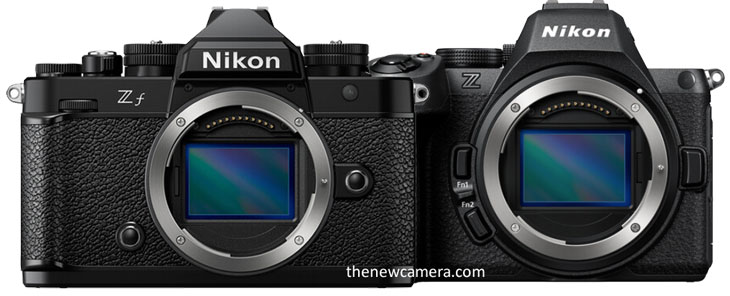
Nikon Z5 II vs Nikon Zf – Let’s compare the two and find out the major difference between the photography and the videography parts.
Photography Analysis
Nikon Zf camera features extensive manual control
First, let’s talk about the design of both cameras. Nikon Zf is built like a tank and features extensive manual control over the body with a retro look, so if you are someone who loves to have a retro-looking camera for photography purposes, without having a second thought in your brain, you should pick this camera.

You have to buy an additional hand grip for Zf
In terms of overall design, the Nikon Z5 II camera has a deep hand grip, which is comfortable to hold for a longer period. However, due to its classic retro design, Zf does not have a deep or handy grip, so we have to buy it from SmallRig or a new addition, and you have to purchase it when you buy the Zf camera. In the Nikon Zf camera, we have a microSD card option and a UHS-II SD memory card slot, so you do have a dual card slot option—one is microSD. These cameras have similar 3.69 million-dot electronic viewfinders, but the Nikon Z5 II specifically mentions its brightness, which is 3000 nits—good for daylight shooting. The rest of the core specifications, which include the ports and the battery life, are approximately the same.
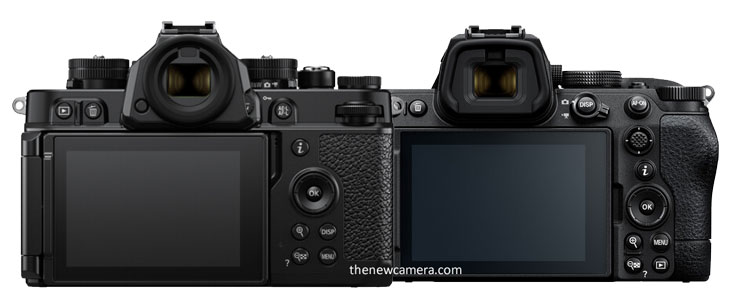
The Nikon Zf camera doesn’t have the joystick controller as we have in the Nikon Z5 II camera, it helps to navigate easily.
Internal core specifications of both the cameras.
Internally, both of the cameras are almost the same, so let’s start with the sensor.
Image sensor and image processor (same in both): Both cameras use a 24-megapixel BSI full-frame CMOS sensor. The Z5 II camera is paired up with the EXPEED 7 image processor. So technically, we will not find any big difference in the image quality performance of both the cameras. Both will provide us with similar types of images.
Image stabilization (same in both): Both of them feature a similar type of sensor-shift image stabilization unit inside them, and even the image processor that handles the firmware and the operation of the IBIS unit is the same. So the differences we see in the table—that one has 7.5 stops and the other has 8—may be due to some of the parameters that CIPA regularly changes while testing out the cameras. Although the IBIS unit inside both of these bodies is the same. And in both the cameras, we have an IS mechanism that you can link with lens VR (IBIS).
Continuous shooting speed (same in both): The Zf and Nikon Z5 II both can shoot at up to 11fps in RAW (in Continuous High Extended mode), and up to 15 or 14fps with the help of mechanical shutter, depending on the use of electronic or mechanical shutter for JPEG mode. There’s also a JPEG-only ‘C15’ and ‘C30’ mode that uses a video stream to shoot 30fps images. We also get a pre-burst option like that on the Z8 and Z9, in both the Nikon Z5 II and Nikon Zf.
Here’s a comparison table based on the information you provided for the Nikon Z5 II vs Nikon Zf:
| Feature |
Nikon Z5 II |
Nikon Zf |
| Design |
Modern DSLR-style with Standard controls |
Retro-style, Extensive manual controls |
| Build Quality |
Solid, ergonomic |
Built like a tank with vintage aesthetics |
| Handgrip Style |
Deep hand grip |
Lacks deep grip (requires external grip) |
| Memory Card Slots |
Dual card slots: 2x UHS-II SD |
Dual card slots: 1x UHS-II SD, 1x microSD |
| Electronic Viewfinder |
3.69 M-dot EVF, 3000 nits brightness |
3.69M-dot EVF |
| Sensor Type |
24MP BSI full-frame CMOS |
24MP BSI full-frame CMOS |
| Image Processor |
EXPEED 7 |
EXPEED 7 |
| Image Quality |
Similar performance |
Similar performance |
| Image Stabilization (IBIS) |
Yes (same unit as Zf) |
Yes (same unit as Z5 II), rated slightly higher (may vary due to CIPA testing) |
| Pixel Shift Mode |
Yes, 96 MP |
Yes, 96 Mp |
| IS + VR Sync |
Yes |
Yes |
| Continuous Shooting (RAW) |
Up to 11 fps (Continuous High Extended) |
Up to 11 fps (Continuous High Extended) |
| Pre-Shooting Buffer |
Yes |
No |
| JPEG Burst Modes |
C15 / C30 (up to 30fps JPEG via video stream) |
C15 / C30 (up to 30fps JPEG via video stream) |
| Pre-Burst Option |
Yes (like Z8/Z9) |
Yes (like Z8/Z9) |
| Battery Life & Ports |
Approx. same as Zf |
Approx. same as Z5 II |
Both cameras are capable of recording 4K videos at 60 fps with DX crop, and 4K 30 FPS oversampled video, as well as full HD videos up to 120 frames per second. All these frame rates are the same.
In a recent update to the firmware, the Nikon ZF received Clear Zoom as well as the latest Bird Eye Autofocus update.
Both of the cameras, the Nikon Z5 II and the Nikon ZF, record 4:2:2 10-bit videos internally in their SD card. Both of them share the 10-bit H.265, SDR, and N-Log modes as well as Red LUT LED support.
Now, where does the difference exist?
- The difference is that the Nikon Z5 II can record N-RAW videos internally in its SD card, whereas the Nikon ZF is limited to recording N-Log, unprocessed video, still not available in the ZF camera.
- Product Showcase mode: This exclusive feature is currently only limited to the Nikon Z5 II camera. We hope and expect that in upcoming firmware updates, Nikon ZF will get that, too.
| Feature |
Nikon Zf |
Nikon Z5 II |
| Max Video Resolution |
4K 60p (1.5x crop) |
4K 60p (1.5x crop) |
| Uncropped 4K |
Up to 30p |
Up to 30p |
| Full-HD Slow Motion |
Up to 120p |
Up to 120p |
| N-Log |
Yes, 10-bit |
Yes, 10-bit |
10-bit H.265 in SDR/HLG/N-log tone modes (both cameras)
|
| Waveform Monitor |
Yes |
Yes |
| RED LUTs Compatibility |
Yes |
Yes |
| N-Raw Recording |
Yes (12 Bit), internally |
No |
IBIS
|
Yes |
Yes |
| Electronic VR |
Yes |
Yes |
| Product Review Mode |
Yes |
No |
| High-Res Zoom |
Yes (2X) |
Yes (2X) |
The Conclusion
When we talk about photography performance, then both the camera Nikon Z5 II and Nikon ZF deliver almost the same performance the fact both of them feature the same sensor and image processor, and even the same sensor. Now, for photographers who love retro design, retro aesthetic, and extensive manual control over their body, they should prefer the Nikon ZF camera, but do remember that because the hand grip is minimal, you have to buy an additional hand grip for extended shoots. On the other side, we have the Nikon Z5 II, which features a very good DSLR-style modern design and deep hand grip — a perfect camera for weddings or even shooting.
Now, when we talk about videography, the Nikon Z5 II takes a slight lead, or you can say advantage, due to the availability of N-RAW recording which is not present inside the Nikon ZF camera. It will give professionals and videographers a bit more flexibility in colour grading and post-production. The other advantage that we have for content creators is the product showcase mode in Z52, so it’s an ideal camera for YouTube and content creators by enabling product showcase mode.
Nikon Zf vs Nikon Z5 II – Price Check – Latest Deals
Nikon Zf body price – B&H Store – Amazon.com
Get the Nikon Z5 II camera from B&H Store | Adorama.com | Amazon.com
Support us – Use or affiliate link Amazon.com | B&H Store | Adorama.com for the next purchase u make – it helps us 🙂
Follow us on our social pages FACEBOOK | TWITTER | INSTAGRAM to get live Camera News + Nikon Rumors 24X7
By admin, on April 8th, 2025
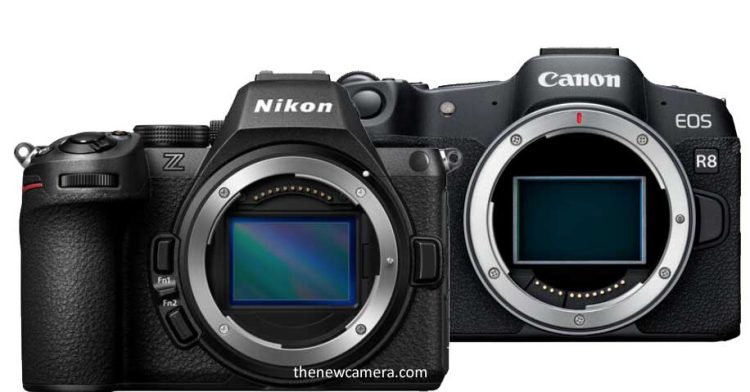
Let’s compare the Nikon Z5 II vs Canon R8, We have compared the two best entry-level cameras on this page; the first part of the comparison is dedicated to ” Best camera for still shooters,” and the 2nd part is the “best camera for Video shooters”. Now, let’s explore the content.
Table of Contents for Photography Part
🔎 Table of Contents: Video Capabilities Comparison
Best Camera for Photographers
Canon R8 is a lightweight full-frame camera weighing approximately 450 grams, whereas Nikon is a bit heavy in your hand with 700+ grams. But the Nikon build is more like a professional camera, not an entry-level design like we have in the Canon R8, and we have a single card slot in the Canon R8 camera. We have to add our batteries in the same card slot like we have to do in the entry-level cameras, but in the Nikon Z5 Mark 2 camera we have dedicated dual card slots and we have to insert our battery in the battery compartment. They are not mixed.
Handling and Ergonomics
Now both cameras are made by DSLR giants, great camera makers of all time, so the hand grip of both cameras and how the viewfinder is placed is very correctly done, so neither of the cameras will give you discomfort or hand pain while you are using them for a longer period of time.
Limited availability of Canon full-frame lenses in Canon RF Mount – The problem begins when you start looking for different variety of lenses as per your requirement and specific needs, then there is a huge possibility that some of the Canon lenses will ultimately go out of your budget and this may create a level of frustration that you have to deal with whenever you start searching for your favourite lenses. The big reason behind this is Canon’s RF mount restriction on their third-party lenses. And when I am creating this article, none of the third-party lens makers have started creating full-frame lenses for Canon RF Mount.
| Aspect |
Nikon Z5 Mark II |
Canon R8 |
| Battery |
1x EN-EL15c Rechargeable Lithium-Ion (Included)
✅ • Approx. 380 Shots |
1x LP-E17 Rechargeable (Included)
• Approx. 150 Shots |
| Lens Availability |
✅ Better third-party support expected (no such strict RF-like restriction mentioned). |
Limited variety; Canon RF mount restricts third-party full-frame lenses. |
| Third-Party Lens Support |
✅ Some third-party lenses are or will be available. |
None available at the time of writing for full-frame RF mount. |
| Camera Weight |
1.5 lb / 700 g (With Battery, Recording Media) |
✅ 1.0 lb / 461 g (With Battery, Recording Media) |
| Build Quality |
✅ Professional-style build. |
Entry-level design. |
| Card Slots |
✅ Dual dedicated card slots. |
❌ Single card slot. |
| Battery & Card Slot Design |
Separate battery compartment and dual card slots. |
Battery and card share the same slot, like entry-level cameras. |
| Ergonomics & Handling |
Good hand grip, no discomfort during long use. |
Good hand grip, no discomfort during long use. |
| Manufacturers |
Made by Nikon, a DSLR giant. |
Made by Canon, a DSLR giant. |
| Viewfinder Placement |
Well placed for comfortable use. |
Well placed for comfortable use. |
Photography Comparison
The Canon R8 camera uses a 24.5MP BSI CMOS Full-frame sensor, and the Nikon Z5 II camera uses a 24.2MP FSI CMOS Fullframe sensor. So, technically and even in samples we have seen and witnessed that the BSI CMOS sensor produces better low-light images with less noise, so if we compare both, we will see one stop of better low-light performance from Nikon Z5 II.
At the very same time, we also have some advantages associated with Canon’s sensor, Canon’s research and development team has done their task very beautifully, and despite being an FSI CMOS sensor, they have updated the bus structure inside the sensor, and the readout speed of the sensor has been upscaled to 14.5ms. Whereas the Nikon Z5 II readout speed is 22ms.
| Aspect |
Canon R8 |
Nikon Z5 II |
| Sensor Type |
24MP FSI CMOS |
24MP BSI CMOS |
| Low Light Performance |
Good, but slightly behind BSI |
✅ Better low light, ~1 to 2 stop advantage |
| Readout Speed |
✅ 14.5ms (faster) |
22ms (slower) |
| Sensor Optimization |
✅ Updated bus structure for faster readout |
Standard BSI architecture |
Image Quality Test
Nikon Z5 II camera uses a full frame BSI CMOS sensor and in the low light test you can see the camera is able to extract 1 to 2 stops better performance than the Canon R8 at 102400 ISO range.
And that’s not only limited to 1 or 2 stops of updated low light performance since the camera also features sensor shift-based stabilization mechanism which is effective up to 7.5 stops, so the camera also allows you to use shutter speed at least 4 to 5 stops slower without any issues.
Nikon uses the same advanced image stabilization system that we have seen in the Nikon Zf. You can link your autofocus points with the camera’s VR, that will help you to get a true 7.5 stops of IBIS.
So if we combine all these factors—BSI CMOS sensor and 7.5 stops of sensor shift image stabilization—then the Nikon Z5 Mark II camera becomes the best camera for low light or handheld photography.
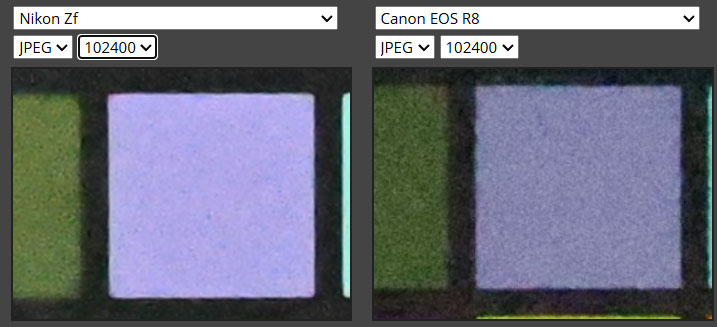
Now in the base ISO range, we can witness a very little bit of difference, but it’s still there—it exists. And the difference is the presence of optical low-pass filter inside Canon R8, and due to that, the details that we are getting, the words that we are reading, look a bit faded—only by a fraction—compared to Nikon, where we do not have any low-pass optical filter over the sensor and that’s why we are getting slightly better and clearer images.
Nikon camera not using a low-pass filter from the DSLR era, so if you want to do research, start researching entry-level DSLR models like ” Nikon D5600 without optical low filter,” and so on.
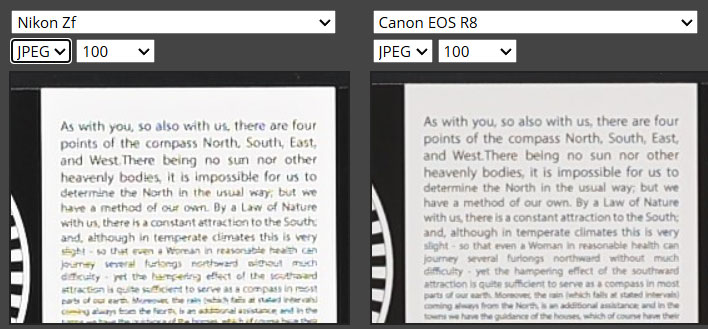
Image Stabilization
Nikon Z5 Mark II camera features 7.5 stops sensor-shift image stabilization system which helps to capture your creation with clear shots even in extreme low light environments. We also have electronic (with crop) image stabilization in video, so in video you get enhanced image stabilization support of mechanical as well as electronic.
In Canon R8, we do not have any sensor-shift image stabilization support. Yes, you can use OIS lenses which roughly work up to 4.5 stops to support your handheld shooting. In video mode, you do get EIS support with crop.
| Feature |
Nikon Z5 Mark II |
Canon EOS R8 |
| Sensor-Shift Stabilization |
✅ Yes, 7.5 stops sensor-shift IBIS.
Allows shutter speeds 4–5 stops lower. |
❌ No IBIS.
Supports up to 4.5 stops via OIS lenses. |
| Video Stabilization |
✅ Electronic IS (with crop) in video + IBIS for enhanced stabilization. |
✅ EIS available in video (with crop). No sensor stabilization. |
| High-Resolution Mode |
✅ Yes, 96MP Pixel Shift mode (Tripod required; processed via Nikon NX software). |
❌ Not available. |
| Autofocus System |
273-point Hybrid AF
Supported by EXPEED 7 and AI AF (same as Nikon Z8)
Detects 9 subjects |
✅ 4897 DPAF points (1053 cross-type)
DPAF II with superior tracking from R6 Mark II lineage |
| AF Tracking |
✅ Advanced AI-based subject detection: Humans, pets, bird eye AF, vehicles, etc. 9 Different types of subject detection. |
Fast tracking with Canon’s advanced DPAF II system.
Faster sensor readout improves response. |
| Burst Shooting (Mechanical) |
✅ Up to 11 fps RAW and 14 FPS Jpeg (mechanical shutter)
Clean results with no rolling shutter artifacts. |
❌ No full mechanical shutter
EFCS at 6 fps. |
| Burst Shooting (Electronic) |
Up to 30 fps Full res. (JPEG only) with electronic shutter. |
✅ Up to 40 fps (electronic shutter)
Great for sports/action. |
Autofocus
- Nikon Z5 II: Features a total number of 273-point hybrid AF system, but now the sensor is supported by EXPEED 7 image processor loaded with the same AI AF as we have seen in Nikon Z8. Due to the AI algorithm, the camera can track and predict the movement of 9 different types of subjects, which include human face and eye, pet’s face and eye as well as it also features a dedicated bird eye AF mode for wildlife shooters.
- Canon EOS R8: Canon R6 Mark II 24mp DPAF sensor and Number of focus points, 4897; Number of cross-type focus points, 1053. Canon is working on HYBRID AF sensors and DPAF sensor tech, from the DSLR era. Their camera does have superior autofocus tracking performance without a doubt.
So either you use any of them, none of them will disappoint you, but even if some asks me about the best Camera for AF. Due to the faster readout speed of the Canon R8 sensor, the overall response time becomes fast, and in a lab environment, text Canon will show up with better tracking performance.
Burst Shooting
- Nikon Z5 II: Features continuous shooting speed up to 11fps (mechanical shutter) and 30fps (electronic shutter, JPEG only). So, images are highly usable up to 11 FPS since,e as we all know, the mechanical shutter overrides the sensor readout speed, so if ur using the camera up to 11 FPS, free from rolling shutter effect.
- Canon EOS R8: Does not have a full mechanical shutter, it’s limited to EFCS and Electronic shutter, provides max 6fps (electronic first curtain) and an impressive 40fps (electronic shutter). The higher electronic burst rate makes it superior for action and sports photography.
Sensor Shift Image Stabilization
Nikon Z5 Mark II camera features 7.5 stops sensor-shift image stabilization system, You can use shutter speed Lower up to 4-5 Stops than as per the requirement of the situation, which helps to capture your creation with clear shots even in extremely low light environments. We also have electronic (with crop) image stabilization in video, so in video you get enhanced image stabilization support of mechanical as well as electronic.
In Canon R8, we do not have any sensor-shift image stabilization support. Yes, you can use OIS lenses which roughly work up to 4.5 stops to support your handheld shooting. In video mode, you do get EIS support with crop.
High Resolution Pixel Shift Mode: It’s a part of the Nikon IBIS system, and it allows you to capture 96 Mo of High-resolution images, But you have to use tripod for this mode, and the images are later processed by Nikon NX software.
Viewfinder and Screen
- Nikon Z5 II: 3000 NITS Brightness in EVF, the 3.69 Mdot resolution, the EVF now has brightness scaled up to 3000 Nits, which helps a photographer to easily capture a shot without any screen visibility issues, which generally happens in bright sunlight, and a 3.2-inch, 2.1 M-dot fully articulated touchscreen.
- Canon EOS R8: Limited to 2.36 M-dot EVF (0.7x magnification) and a 3.0-inch, 1.62 M-dot fully articulated touchscreen.
Verdict and Conclusion / Best Camera for Photographers
For Photographers
- Action/Sports Photographers: The Canon R8 tops with 40 FPS electronic shutter and faster sensor readout speed. Also, we have to note that the R8 lacks of full mechanical shutter, and with the help of EFCS shutter, the max continuous speed we will be getting is 6 FPS. Nikon Z5 II uses a full mechanical shutter and a MAX continuous shooting speed up to 11 FPS with mechanical (RAW)and up to 30 FPS with electronic, so if ur love to have the MAX speed possible and rolling shutter effect doesn’t bother you then you should go with Canon otherwise,e with Nikon up to 14 FPS
- Landscape/Low-Light Photographers: Nikon Z5 II camera features 7.5 Stops, IBIS, and better low-light performance due to the presence of a 24 MP BSI CMOS sensor.
- Wedding/Event Photographers: The Nikon Z5 II stands out with dual card slots for backup, longer battery life, and a robust build, ensuring reliability during long events.
- Travel Photographers: The Canon EOS R8 wins with its 461g weight and compact size, and uses the OIS lens, it’s good to go like 28-70mm F2.8 OIS, but in Z5 II its 700gm camera but features IBIS, so you can pair non-IBIS lenses with ease.
Video Features Comparison Table
| Feature |
Nikon Z5 II |
Canon EOS R8 |
| Video Resolution |
4K @ 60fps (1.5x crop), 4K @ 30fps (full width) |
✅ 4K @ 60fps (1.1x cropped, 6K oversampling) |
| Slow Motion (FHD) |
Up to 120fps |
✅Up to 180fps |
4:2:2 10 Bit internal Recording
|
Yes |
Yes |
| Log Support |
Yes (Clog3) |
Yes (NLog) |
| Image Stabilization (Video) |
✅7.5 stops IBIS + EIS |
Only EIS (no IBIS) |
| Autofocus System |
273-point Hybrid AF with AI (Z8-level subject tracking incl. bird-eye AF) |
Dual Pixel CMOS AF II, 4897 AF Points, fast tracking |
| Sensor Type |
24MP BSI CMOS |
24MP FSI CMOS |
| Dynamic Range |
✅Up to 15.5 stops |
Around 13.7 stops |
| Waveform Monitor |
Yes |
No |
| Preloaded LUTs |
✅Yes (4 RED LUTs) |
No |
| Audio Support |
✅24-bit 4-channel (analog), 16-bit (MP4) |
16-bit only |
| Battery Life (CIPA) |
✅~780 shots / ~2+ hrs 4K video |
~370 shots / ~1 hr 40 mins video |
| Connectivity |
HDMI Type-A, dual 3.5mm mic/headphone jacks |
HDMI Type-A, dual 3.5mm mic/headphone jacks |
| Low-Light Suitability |
Excellent (BSI + IBIS combo) |
Moderate (no IBIS, FSI sensor) |
| Best For (Use-Case) |
Handheld vloggers, wedding cinematographers, low-light shooters |
Gimbal users, slow-mo content creators, studio talking heads |
| Lens Ecosystem |
✅Wide open (Z-mount + third-party support) |
RF mount (limited budget-friendly third-party options) |
Video Frame Rates
Canon R8 offers an amazing advantage over the Nikon Z5 Mark II camera in terms of video frame rates. If you compare the two, Canon is able to record 4K UHD at 60fps using 6K oversampling without crop. Nikon Z5 II does record 4K 60fps video, but with 1.5x crop.
The Canon R8’s standout feature is its slow-motion capability at 180fps in Full HD, offering more creative options for dynamic content.
So if you need uncropped 4K 60fps video from your camera, then without a doubt Canon R8 should be the choice for you.
Sensor-Shift IBIS in Video
Nikon provides sensor-shift image stabilization in video, and when you pair the Nikon camera with VR lenses it becomes more effective. EIS (Electronic Image Stabilization) option is also available which adds more stability over the mechanical IBIS.
Canon R8 remains limited to electronic stabilization in video mode, and we don’t have any mechanical sensor-shift image stabilization system inside it.
So for handheld shooting, it’s highly recommended to have a camera like the Nikon Z5 II. While in the case of Canon R8, you have to get a proper gimbal with OIS lenses.
Codecs and Color Depth
Both cameras support up to 10-bit color depth in H.265 (HEVC) and H.264 (MPEG-4 AVC) formats. But as we all know, the dynamic range of Canon’s 24-megapixel FSI CMOS sensor is limited to 13.7 stops. So it will be producing a bit limited dynamic range when compared to the 15.5 stops of Nikon Z5 II’s 24-megapixel BSI CMOS sensor.
What does it mean to you? It clearly means that you have to work under proper lighting conditions to get the maximum output from the Canon R8 camera. Other than that, for low-light environments, the Z5 II sensor is more suitable since it’s also backed by IBIS, making it more convenient for handheld recording.
Now this section will be relevant for professionals only. If you are working in color grading and love to apply RED LUTs over your footage, then Nikon Z5 II does have 4 preloaded RED LUTs inside it.
Moreover, you also get a waveform monitor instead of just a histogram monitor like we generally get in Canon R8. The waveform monitor helps us to evenly expose the entire scene more properly and accurately than the histogram.
Audio and Connectivity
Both cameras feature dual 3.5 mm jacks — one for the microphone and the other for the headphone port for monitoring audio.
The interesting part is that the Nikon Z5 II camera now features 24-bit 4-channel audio support while recording in analog, and when you’re recording in MP4 format, you get 16-bit audio support from the camera.
In Canon R8, we only have 16-bit audio support.
Connectivity is similar, with HDMI Type-A (mini) outputs for external monitors or recorders, making both suitable for studio setups.
Battery Life and Special Features
The battery life of the Nikon is slightly longer since you are getting approximately 780 shots as per the CIPA standard. Specifically in video, we are getting 2+ hours of recording time at 4K 30fps.
In Canon R8, we have a smaller battery and compact body, so the overall recording time is approximately 1 hour and 40 minutes, due to the battery limitations.
Nikon Z5 II’s BSI CMOS sensor as well as 7.5 stops of sensor-shift image stabilization, are the two main factors that will allow you to capture crisp and clear shots in uncontrolled lighting environments.
Even if you are doing handheld shots, this camera will help you a lot more than the Canon — without a doubt.
So if you are a wedding cinematographer, think twice before investing. Not only is there no IBIS in the Canon camera, but the OIS lenses for Canon are also costly.
Suitability for Different User Types
- Content Creators: …Content creators who mostly use their camera on a gimbal and love to have a camera with higher frame rates like uncropped 4K 60fps or Full HD 180fps — especially for shooting dance videos or creating slow-motion reels — will find the Canon R8 more suitable.Pair it with a gimbal like DJI RS Mini 3 and high-quality Canon OIS prime lenses like 24mm, 35mm, and 85mm, and you’re good to go.
- Handheld Vloggers: …For handheld vloggers, we highly recommend going with the Nikon Z5 Mark II since this is the only camera that gives you mechanical image stabilization up to 7.5 stops.You will also get EIS support, which helps get clear handheld shots. This camera also features a BSI sensor that records clean video in low light.So, for handheld shooters, Nikon Z5 II is highly recommended — even if you don’t like the look of the camera, the output will speak for itself.
- Talking Head Video Creators: …Both cameras are excellent for talking-head videos since sensor-shift image stabilization is not needed in such scenarios.At the same time, when you are recording in a room, office, or studio setup with controlled lighting, the sensor type becomes less critical. All you need is a good Canon prime lens, and you’re good to go.So, if you wish to get the Canon R8, go ahead. Otherwise, the Nikon Z5 II is still an all-rounder.
- Wedding Cinematographers: ..The best camera for wedding cinematographers is the Nikon Z5 II since it offers sensor-shift image stabilization and a BSI CMOS sensor for better low-light performance.This will help ensure camera stability even when your gimbal fails or you run out of batteries. In such emergency scenarios, you can even shoot handheld.
- Reels Makers: …If you create reels and mostly use your camera on a tripod, then the Canon R8 is more recommended since it can record uncropped 4K 60fps video and Full HD video at 180fps.Technically, the R8 is faster and hence more usable for creating slow-motion sequences.But if you shoot your content handheld, then it’s highly recommended to go with the Nikon Z5 II.
Conclusion
Both cameras are excellent at their price points.
But the Nikon Z5 II has a wider approach due to the presence of a BSI CMOS sensor, sensor-shift image stabilization (IBIS) up to 7.5 stops — which can be linked with autofocus points — and, above that, we get a completely open lens mount to choose from a wide range of lenses at various price points.
The Canon R8 offers uncropped 4K 60fps video and Full HD 180fps slow motion, which is a unique offering. But it has limited dynamic range, lower low-light performance due to the FSI sensor, and the absence of sensor-shift stabilization.
So, its features — along with its limitations — make the Canon R8 ideal for a specific type of audience, but not for everyone.
Nikon Z5 II vs Nikon Z6 II | Nikon Z5 II vs Canon R8 | Nikon Z5 II vs Nikon Zf | Nikon Z5 II vs Sony A7 III
Get the Nikon Z5 II camera from B&H Store | Adorama.com | Amazon.com
Support us – Use or affiliate link Amazon.com | B&H Store | Adorama.com for the next purchase u make – it helps us 🙂
Follow us on our social pages FACEBOOK | TWITTER | INSTAGRAM to get live Camera News + Nikon Rumors 24X7
By admin, on April 4th, 2025
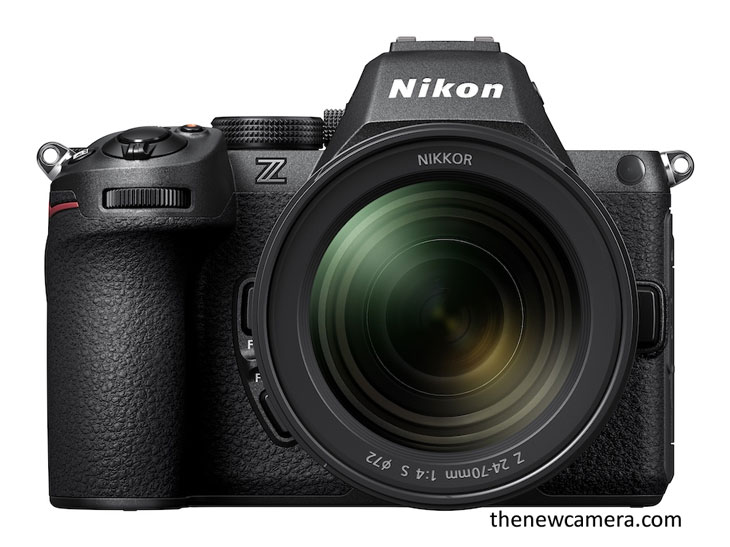
Let’s compare the Nikon Z5 II versus the Nikon Z6 II camera now. Z5 II camera was announced recently on April 2025 and features all the possible latest updates straight out from Nikon professional camera that include AI AF, that helps 9 different types of subject detection 🔎 automatically and it also has a dedicated bird eye auto focus mode that even cameras like the Nikon Z6 Mark III are waiting for an update, at the time I am writing this article on April 4, 2025.
Similarly, not only are the updates limited to AI auto focus, we also have 7.5 stops of image stabilizer that can be linked to the Nikon AF points to ensure the best stability possible in this segment.
The list goes on, so let’s compare side-by-side the advantages of the new Z5 Mark II camera compared to the Z6 Mark II.
| Feature |
Nikon Z5 II |
Nikon Z6 II |
| Image Processor |
EXPEED 7 |
EXPEED 6 |
| 9 AI Subject Detection |
Yes |
No |
| Bird Eye AF |
Yes |
No |
| Human & Animal Eye AF |
Yes |
Yes |
| AF sensitivity |
– 19 Ev |
– 5 Ev |
Design and build comparisons of both the cameras
Both cameras feature a magnesium alloy body, and both of them are weather sealed, so you don’t have to worry about using them outdoors in a kind of windy or rainy situation if you are using weather-sealed lenses. Other than that, the weight and the size are approximately the same. The biggest noticeable difference when you pick both of them in your hand is the kind of display screen the cameras are using. Z5 II is using a fully articulating touch display screen that helps you to create content on the go, whereas the Z6 Mark II camera features a tilting display screen, which limits its use to photographers only.
The other noticeable difference is a bright 3.69 million dot electronic viewfinder with 3000 nits of brightness.
Build & Display Feature Comparison
| Feature |
Nikon Z5 II |
Nikon Z6 II |
| Body Material |
Magnesium Alloy |
Magnesium Alloy |
| Weather Sealed |
Yes |
Yes |
| Display Screen |
Fully Articulating Touchscreen |
Tilting Touchscreen |
| EVF |
3.69 M-dot, 3000 nits |
3.69 M-dot (no brightness spec) |
| Top LCD Display |
No |
Yes |
| Ideal For |
Hybrid creators (photo + video) |
Photographers |
But apart from the almost identical controls and ports, both of them have dual card slots. In the camera, the additional advantage we get in the Z6 Mark II is the top display screen, and in the Z5 II, we don’t have that, so that makes the design difference complete.
Overall, both cameras are highly usable for photographers, but if you are a hybrid shooter, the Nikon Z5 Mark II camera is more usable design-wise due to its fully articulating display screen.
Photography features comparison
Nikon Z5 II and Nikon Z6 Mark II feature a bit different sensor readout speed, since the Nikon Z5 Mark II camera uses the sensor from Nikon Zf whose readout speed is faster than the Nikon Z6 II camera, resulting in better images while keeping away rolling shutter effect as much as possible.
Also, the continuous shooting speed of the new Nikon Z5 II with the help of the latest EXPEED 7 image processor goes up to 14 frames per second in JPG and RAW it’s up to 11 frames per second, and with upcoming updates, the mechanical shutter will support RAW up to 14 FPS. And if you use the electronic shutter of the Nikon Z5 II camera, you will get the continuous shooting speed of 30 frames per second, which is insane when compared to the Nikon Z6 II. In the Nikon Z6 II camera, the continuous shooting speed reaches 14 frames per second in 12-bit RAW, so it is also quite usable.
Burst Shooting & Sensor Speed Comparison
| Feature |
Nikon Z5 II |
Nikon Z6 II |
| Mechanical Shutter Speed |
14 FPS with 14 Bit RAW |
14 FPS (12-bit RAW) |
| Electronic Shutter Burst |
Up to 30 FPS |
Not available |
| Sensor Readout Speed |
Faster (from Nikon Zf) 24ms |
Slower 50.8 ms |
More than these two differences, the biggest difference is due to the presence of EXPEED 7 image processor, we are getting AI autofocus inside the new Nikon Z5 II camera, and with the help of that the camera can detect 9 different types of moving subjects automatically which also includes bird eye autofocus mode, specifically for wildlife photography.
Nikon Z6 Mark II camera does detect human and animal eyes but the autofocus algorithm isn’t updated that much to support AI autofocus just like we have in Nikon Z5 II.
So for photographers it’s not only important to push or uplift the continuous shooting speed to a new benchmark, but at the very same time, it’s also very important to perfectly do subject tracking.
Now let’s talk about the sensor shift image stabilization system. The Nikon Z6 Mark II camera provides up to five stops of shutter speed compensation, whereas the new Z5 Mark II camera features 7.5 stops of shutter speed compensation with the help of new IBIS tech. Not only limited to that—with the new EXPEED 7 image processor—now you can link your VR with camera autofocusing points so you get perfect stability and true 7.5 stops of IBIS from your camera.
| Feature |
Nikon Z5 II |
Nikon Z6 II |
| IBIS (In-Body Stabilization) |
7.5 Stops |
5 Stops |
| VR Linked with AF Points |
Yes |
No |
| Pixel Shift Mode |
Yes |
No |
The expandable ISO range of both the cameras is the same—up to 204800.
ISO Range Comparison
| Feature |
Nikon Z5 II |
Nikon Z6 II |
| Native |
64,000 |
51,200 |
| ISO Range (Expanded) |
Up to 204800 |
Up to 204800 |
| Low Light Performance |
Improved with AI AF |
Good with standard AF |
The low light AF sensitivity of the Nikon Z5 Mark 2 camera is up to -19.0 EV, the camera can do pinpoint AF in nearly dark situations, whereas the Nikon Z6 II camera is limited to -5 EV.
The pixel shift mode is also now available in the Nikon Z5 II camera. With the help of this mode, you can generate 96 megapixel of high-resolution images, but you have to keep your camera still on a tripod and the images will be processed by the Nikon NX software.
Verdict / Conclusion: Best still photography camera – Nikon Z5 II
Nikon Z5 II with its vari-angle display screen and 3000 nits of brightness EVF, not only from the design part but also from its core specification where we find ZF sensor which is quite bit faster while having the readout speed of 23ms, at the very same time the camera uses brand new EXPEED 7 image processor which implements AI autofocus algorithm directly coming from Nikon Z8 and Z9, moreover this the autofocus sensitivity has been upscaled to a next level where you can detect subjects up to -19 EV which was limited to -5 EV in Nikon Z6 II and the cherry on top thing is now the sensor-shift image stabilization is up to 7.5 stops and you can also link your IBIS with camera autofocus point which is completely a brand new thing and gives super stable shot.
Nikon Z5 II has been upscaled from upside down and every single core spec has been updated and now it’s even far better than Nikon Z6 Mark 2 camera so don’t do a mistake by buying the Z6 II get Nikon Z5 II it’s far more better than the Z6 II in terms of still photography.
| Feature |
Nikon Z5 II |
Nikon Z6 II |
| Autofocus Sensitivity |
AF works in -19.0 EV low light (better for dark scenes) |
Limited to -5.0 EV AF sensitivity |
| Pixel Shift Mode |
Available (generates 96MP high-res images via software) |
Not available |
| Image Stabilization (IBIS) |
Up to 7.5 stops with AF-point linked IBIS |
Up to 5 stops, no AF-point linked IBIS |
| Image Processor |
EXPEED 7 (new, faster, supports AI algorithms from Z8/Z9) |
Dual EXPEED 6 |
| Display & EVF |
Brighter EVF with 3000 nits, possibly better display |
Standard brightness |
| Sensor Readout Speed |
23ms readout, helps reduce rolling shutter |
50 ms |
| Design & Build |
Fully refined design with improved internals |
Older design |
| Subject Detection AF |
Inherited from Z8/Z9 (advanced AI tracking) |
More basic subject tracking |
| Price-to-Performance |
More value-oriented with high-end features |
Slightly older tech for the same/lower price |
Video Core Specification
Let’s compare the video specifications of both cameras. The Nikon Z5 Mark II camera can record 4:2:2 10-bit videos, 12-bit videos, and RAW videos. Both of these are significant advantages that allow you can internally record high-quality RAW videos in the camera.
So the Nikon Z5 Mark II camera gives you the next level of colour grading experience. The audio recording also includes linear PCM at 48 kilohertz, 24-bit for any MOV formats. Also, you get 16-bit for MP4, enhancing the overall audio quality for video production.
While researching, I have found that Nikon Z6 Mark II camera also supports linear PCM and AAC, but it does not specify specifically the bit depth beyond the standard 16-bit for AAC and its internal video recording is limited to 8-bit, so in that you are not getting the quality which the recently announced Nikon Z5 II offers.
The Nikon Z5 II camera offers RAW video capability internally inside the camera. You can record N-RAW videos up to 4K 30 FPS and even 4K 60 FPS in DX mode.
Nikon Z6 Mark II camera gives you limited 8-bit recording capability, and if you want to take out RAW videos, you have to use external recorders and switch it to the HDMI port, so that’s a very messy process, and even then, you are not getting the high quality.
Comparison Table:
| Specification |
Nikon Z5 II |
Nikon Z6 II |
| Max Video Resolution |
4K UHD at 60p (APS-C crop), 4K at 30p full width |
4K UHD at 60p (DX crop), 4K at 30p full width |
| 1080p Frame Rates |
Up to 120p |
Up to 120p |
| Slow-Motion |
1080p at 30p x4, 25p x4, 24p x5 |
1080p at 30p x4, 25p x4, 24p x5 |
| File Formats |
NEV, MOV, MP4 |
MOV, MP4 |
| Video Compression |
N-RAW (12 bit), H.265/HEVC (8/10 bit), H.264 (8 bit) |
H.264 (8 bit) |
| Internal Bit Depth |
Up to 10-bit (H.265), 12-bit (N-RAW) |
8-bit |
| External Recording |
Supports 10-bit N-Log, etc. |
10-bit N-Log, HDR (HLG), RAW via HDMI |
| Audio Recording |
Linear PCM 24 bit (NEV/MOV), AAC 16 bit (MP4) |
Linear PCM, AAC (16 bit) |
| ISO Sensitivity |
100-51200, up to 204800 equivalent |
100-51200, up to 204800 equivalent |
RED Luts
|
Yes |
No |
| Waveform |
Yes |
No |
| Lossless Clear Zoom (2X) |
Yes |
No |
| RAW Video |
Internal N-RAW up to 4K 30p |
External RAW via HDMI |
| Additional Features |
Time-lapse, electronic VR, time codes, N-Log, HDR (HLG), wave-form display, etc. |
Time-lapse, electronic VR, time codes, N-Log, HDR (HLG) |
I have found that the recently announced Nikon Z5 II camera offers RED LUTs made for upscaling your overall cinematography experience to the next level. At the very same time, those LUTs are very helpful even in wedding cinematography.
Additionally, your overall cinematography experience becomes more and more enjoyable when you get the support of Nikon’s latest AI autofocus technology as well as 7.5 stops of sensor stabilization to ensure stable and smooth shots.
Overall conclusion: The best video camera is the Nikon Z5 II.
The best camera, when we compare the core specifications of both, without a doubt, is the Nikon Z5 II camera, so we highly recommend you to get the Nikon Z5 Mark II camera over the Z6 II.
Nikon Z5 II vs Nikon Z6 II | Nikon Z5 II vs Canon R8 | Nikon Z5 II vs Nikon Zf | Nikon Z5 II vs Sony A7 III
Get the Nikon Z5 II camera from B&H Store | Adorama.com | Amazon.com
By admin, on April 3rd, 2025

Nikon finally announced the Nikon Z5 II camera. The camera features a major upgrade in the core specification. It now features an updated 24-megapixel full-frame CMOS sensor, paired with the Expeed 7 image processor, that we have already seen in the Nikon Zf camera.
Now, the continuous shooting speed of the Nikon Z5 II can reach up to 14 frames per second, with a mechanical shutter, and the autofocus has been upgraded with an AI AF algorithm ( coming from the Nikon Z8 camera). The camera’s continuous shooting speed can be further pushed up to 30 FPS while shooting with an electronic shutter.
Get the Nikon Z5 II camera from B&H Store | Adorama.com | Amazon.com

Nikon Z5 II major features
- 24MP BSI full-frame CMOS sensor
- In-body image stabilization, rated up to 7.5EV
- Autofocus subject detection with support for 9 subject types
- 14 fps Raw w/ mechanical shutter
- 30fps JPEG-only mode with pre-release capture
- 3.69M dot 60Hz EVF with 3000-nit peak brightness
- 4K/30 full-width, 60p w/ 1.5x crop
- 10-bit N-Log or N-Raw capture
- Dual UHS-II card slots
- Downloadable color mode presets via Imaging Cloud
The camera features 10-bit internal recording in log, and the frame rate can be boosted up to 4K 60 FPS, but in DX mode. While recording in 4K 30 FPS, there is no crop. The overall autofocus algorithm has also been optimized for video recording. Support for inbuilt 7.5 stops of sensor-shift image stabilization works very well while recording video. At the same time, you also get a vari-angle monitor to properly compose your scene according to exposure.
The Z5II will be available in April and will retail for $1699 – a $300 increase over its predecessor in absolute terms, though a very similar price when considering inflation and its greater ambitions. Kits will also be available with a 24-50mm f/4-6.3 lens for $1999, or with a 24-200mm f/4-6.3 VR for $2499.
Nikon Z5 II Official Press Release
Nikon announces the Nikon Z5II: Let full-frame be the next step in your creative journey
Amplify any Aesthetic & Unleash Your Full Creative Potential with the Most Feature-Packed Camera in its Class
MELVILLE, NY (April 3, 2025) — Today, Nikon announced the new full-frame / FX format Z5II, an entirely new generation of intermediate-level camera that miraculously manages to fit the latest high-end features into a lightweight camera body that will help kickstart any creative spark. The Nikon Z5II is the easiest way to level up a user’s captures with full-frame image quality, incredibly fast and intelligent autofocus (AF), excellent low-light performance, one-touch film-inspired color presets and the brightest viewfinder of any competing camera.1
The new Nikon Z5II uses the same high-power EXPEED 7 image processing engine as Nikon’s highest caliber professional models, the Z8 and Z9. The benefits of this processor are immediately apparent, affording incredible levels of performance and extremely fast AF with subject detection powered by deep learning (AI) technology. This highly accurate, high-speed focus is a massive leap from its predecessor, locking in at approximately one third2 the time. In addition, the new camera now utilizes a highly sensitive back-illuminated (BSI) CMOS sensor for beautiful rendering of textures and details, even in dimly lit situations such as indoors or nighttime landscapes, with minimal noise. The Z5II further fuels your creative drive with a dedicated Picture Control button and innovative tools like Imaging Recipes and Flexible Color Picture Controls, all of which help users create a truly distinctive look with unparalleled creative control of colors.
“The benefits of the Z5II go far beyond its attainable price and small size, offering users the benefits of our most advanced EXPEED 7 processing engine, a proven full-frame sensor along with unexpected pro-level features and performance” said Fumiko Kawabata, Sr. Vice President of Marketing and Planning, Nikon Inc. “This is the camera many people have been waiting for in order to make the move to mirrorless, since nothing comes close to matching the value of features and performance in its class.”
Reliably Fast Focus and Performance
The AF on the Nikon Z5II is remarkably precise and super-fast, effortlessly locking-on and tracking a wide range of moving subjects. From fast-paced portraits or action shots, the system helps you to never miss a crucial moment, even when a subject is backlit. The cutting-edge AF system can detect up to nine types of subjects for stills and video, including people (faces, eyes, heads, and upper bodies), dogs, cats, birds, cars, motorcycles, bicycles, airplanes, and trains. But it’s not just the focus that’s fast—thanks to the next-generation processing power, the Z5II also offers high performance features from pro level Z models, to excel in any shoot.
- 3D-tracking AF mode keeps the target subject in focus even if it moves rapidly or erratically. This allows for subject tracking, even at high burst speeds, for sharp images again and again when photographing sports, animals or other fast-moving subjects.
- The first full-frame mirrorless Nikon camera with AF-A focus mode. In this mode, the camera automatically switches between AF-S and AF-C focus modes in response to subject movement or changes in composition with still shooting. This allows the camera to automatically focus on the subject, with no setting adjustments when photographing. This new feature makes it simple to photograph pets, kids or other subjects whose movements are difficult to predict.
- Fast continuous shooting speeds3 with a maximum frame rate of 14 frames per second in mechanical shutter mode and up to 15 or 30 frames per second (electronic shutter) with full autofocus.
- Pre-Release Capture4 function when shooting in C15 and C30 modes is capable of recording images buffered up to one second before the shutter-release button is fully pressed, capturing the action before a user can react.
Embrace Low Light Like Never Before
There’s no need to be afraid of the dark with the Nikon Z5II. Featuring a powerful combination of the full-frame back-illuminated CMOS sensor and the EXPEED 7 image-processing engine, the Z5II delivers the best low light ability in its class. Images and video are rendered with minimal noise, and incredible AF detection abilities in low light. Whether shooting indoors, twilight cityscapes or the night sky, the Z5II is built to help you capture confidently in nearly any light, preserving details and textures throughout the broad ISO range.
- Class-leading autofocus detection down to -10EV5 delivers accurate, reliable focus in dim and dark conditions—great for concerts, live performances, festivities, available light portraiture, astrophotography and more.
- A broad standard ISO sensitivity range of 100-64,000, expandable to Hi 1.7 (ISO 204,800 equivalent), delivers exceptional low-light capabilities and outstanding image quality with minimal noise. The max ISO is 51,200 for video recording.
- The 5-axis in-camera vibration reduction (VR) system provides superior image stabilization equivalent to a 7.5-stop6 increase in shutter speed at the center and a 6.0-stop increase at the peripheral areas of the frame. This allows users to create with confidence in lower light and get sharper results, even when handheld or at lower shutter speeds.
- Focus-point VR7 tailors stabilization to the area covered by the active AF point, for sharp rendering of the subject, even when it is positioned near the edge of the frame.
- Starlight View Mode makes focus and composition simple in extremely low light, while the Warm Color Display Mode helps preserve night vision when working in complete darkness.
- Extended shutter speeds up to 900 seconds (15 minutes) in manual exposure mode. Perfect for extreme long-exposure nightscapes and star trails.
Engineered to be Used, Made to be Loved
Shooting with the compact and lightweight Z5II is a satisfying and comfortable experience. The electronic viewfinder (EVF) is simply stunning and is 6x brighter than any competing model. At up to 3000 nits brightness, users can easily shoot even in the brightest direct sun with a perfect view of the frame, with real-time exposure information. Additionally, the rear 3.2” Vari-angle LCD touchscreen rotates freely to nearly any angle, giving full freedom of composition. Get down in the street or hold it high above everyone’s heads and still be able to accurately frame the perfect shot. The grip is deep and comfortable to minimize fatigue. Additionally, the Nikon Z5II’s front, back, and top covers are made from magnesium alloy, which delivers exceptional durability and outstanding dust-and drip-resistance.
Feel the Color with Picture Controls
The Nikon Z5II is the latest camera to support one-button access to Picture Controls, plus compatibility with the Nikon Imaging Cloud. The dedicated Picture Control button opens new possibilities for expressive color, with imaginative film-inspired looks that instantly change the color tone and color of a scene. In a single press, the user can see in real-time the effects of up to 31 built-in color presets plus Imaging Recipes downloaded by the user.
Nikon Imaging Cloud connectivity allows users to download a wide variety of free Imaging Recipes by Nikon and created by popular creators, and to apply these recipes when shooting. In addition, the Z5II supports Flexible Color Picture Control, which allows users to create their own unique color styles using Nikon’s free NX Studio software. Flexible Color allows for a wider variety of color and tone adjustments, including hue, brightness and contrast. What’s more, these settings can also be saved as Custom Picture Controls that can be imported to the Z5II for use while shooting.
Powerful Video Features for Hybrid Users
- The Z5II offers an impressive array of video features for content creators:
- Capture immensely vivid and detailed 4K/30 UHD video, with no crop. This gives creatives the ability to shoot in 4K at full-frame, with more wide-angle freedom. For higher frame rates, the camera can also capture up to 4K/60 with a 1.5x crop.
- Flexible in-camera video recording options with 12-bit N-RAW8, 10-bit H.265, and 8-bit H.264. This is the first camera to be able to record N-RAW to an SD card.
- N-Log9 tone modes offer greater flexibility for color grading. This means Z5II users also have access to the free RED LUTs, which were developed in collaboration with RED for users to enjoy cinematic looks.
- Full HD/120p for flexibility to create 5x slow motion videos in 8-bit H.264.
- Hi-Res Zoom10 uses 4K resolution to zoom up to 2X in-camera during Full HD shooting, without any loss of quality. This is useful when using prime lenses to get closer to a subject and add a dynamic look to footage.
- Product Review Mode will seamlessly switch focus between the user and any objects that they hold up to the camera. Users can even customize the size of the active AF area.
- Upgrade streaming while connected via UVC/UAC-compliant USB port, transforming the camera into a high-quality webcam for live streaming.
- The Z5II also includes ports for headphones and microphones.
Additional Features of the Nikon Z5II
- Dual SD card slots
- Bird detection mode makes it easier to detect birds in motion and in flight.
- Equipped with Nikon’s exclusive portrait functions, including Rich Tone Portrait that realizes radiant and beautiful rendering of skin textures, and Skin Softening that smooths the skin while leaving hair, eyes, and other details sharp.
- Capture high-resolution images with Pixel Shift shooting11 to portray stunning depth and rich textures, from architectural details to rocky landscapes and vibrant artwork, creating images at a staggeringly high resolution of up to approx. 96-megapixels (must be processed with free Studio NX software).
Adobe Creative Cloud Promotion
For a limited time, customers who purchase the Nikon Z5II and register their camera will also get 1 year of Lightroom + 1TB of Adobe Creative Cloud storage. For more information and terms of this promotion, please visit www.nikonusa.com.
Price and Availability
The new Nikon Z5II full-frame mirrorless camera will be available in April 2025 for a suggested retail price (SRP) of $1699.95* for the body only. Kit configurations include the NIKKOR Z 24-50mm f/4-6.3 lens for $1999.95* SRP, and the NIKKOR Z 24-200mm f/4-6.3 VR lens for $2499.95* SRP.
|
KEEP THIS BLOG ALIVE - Support New Camera Buy Canon Lenses, Buy Music CD or Digital Camera at amazon it helps this site, and you do not pay anything extra, it is just a way to help support this site.

|




























